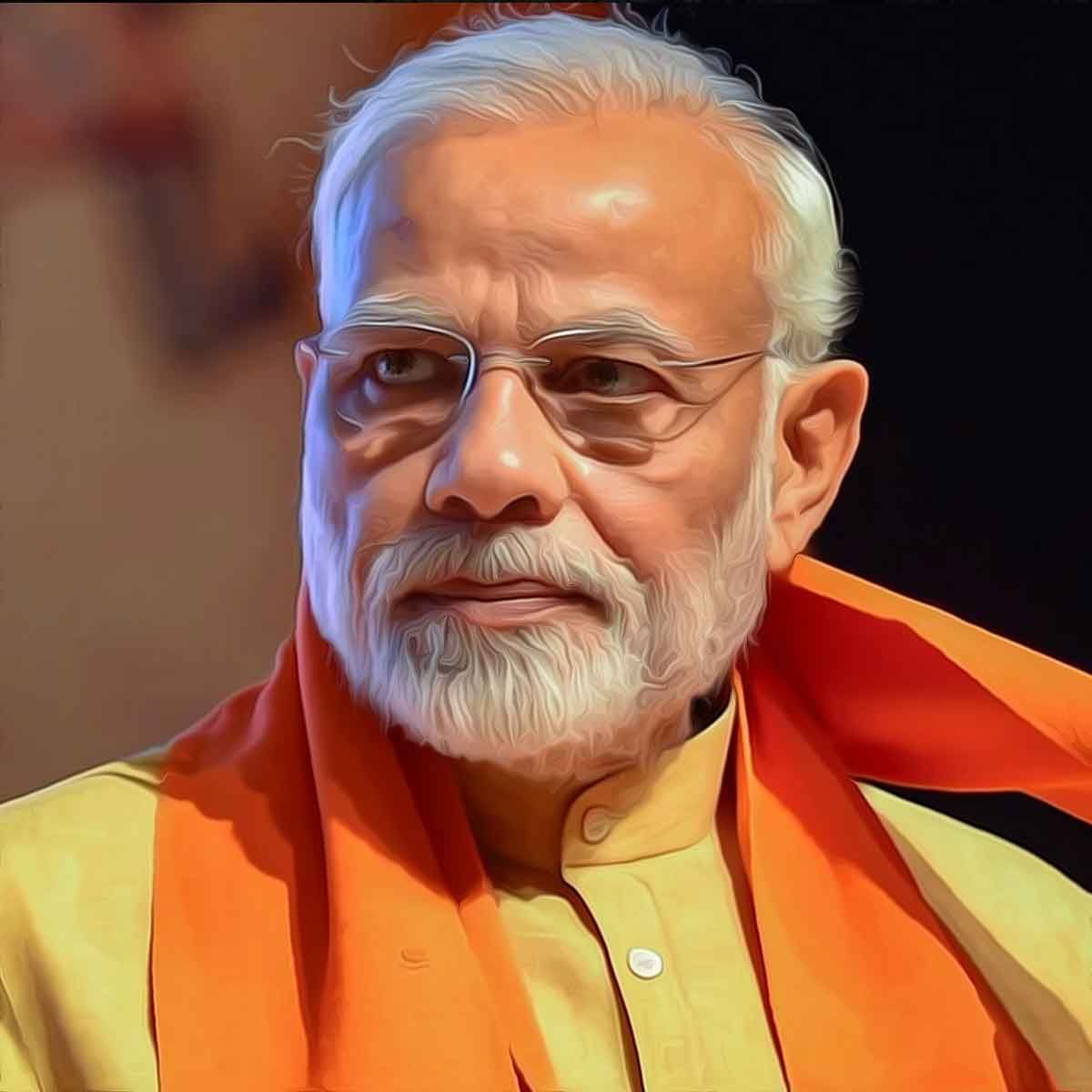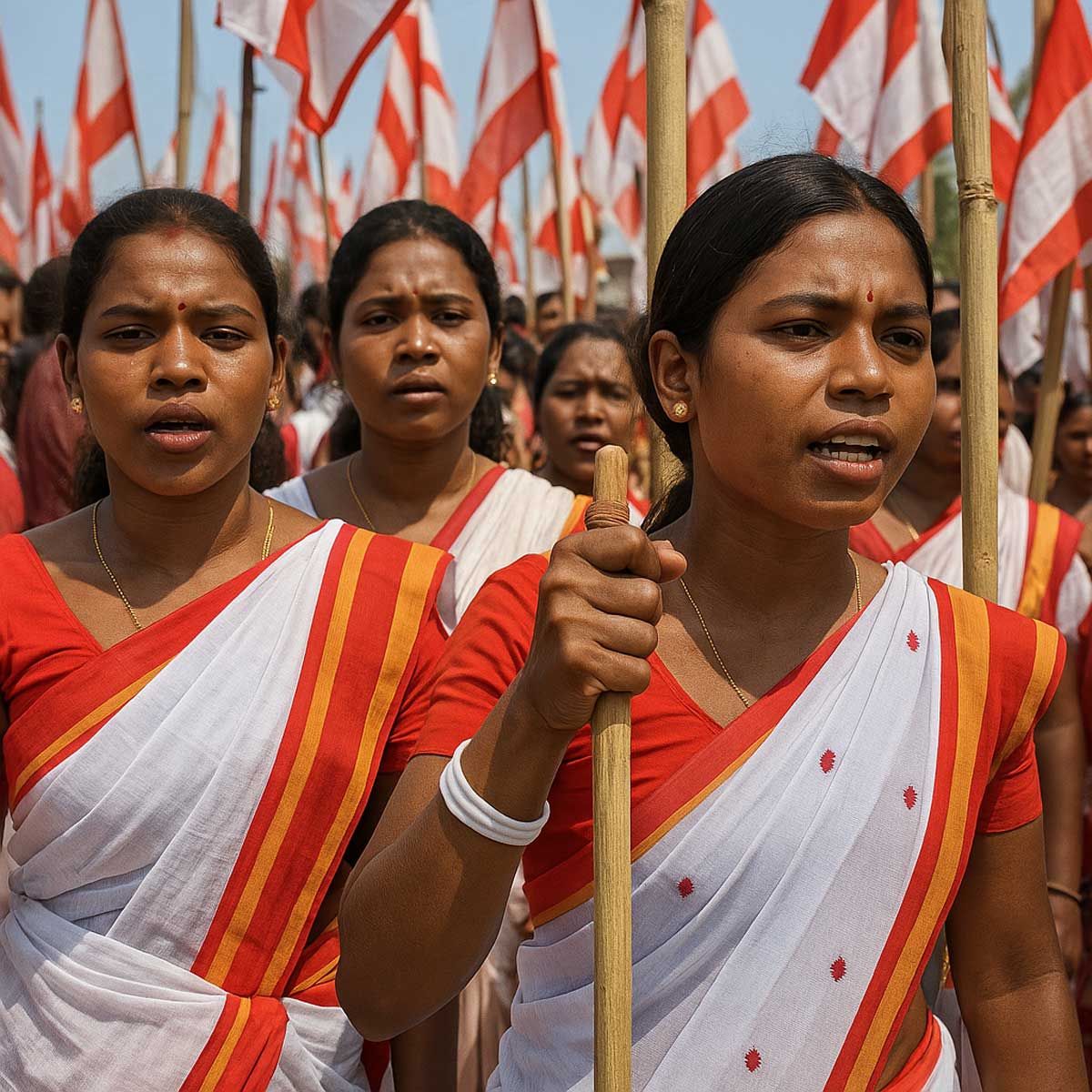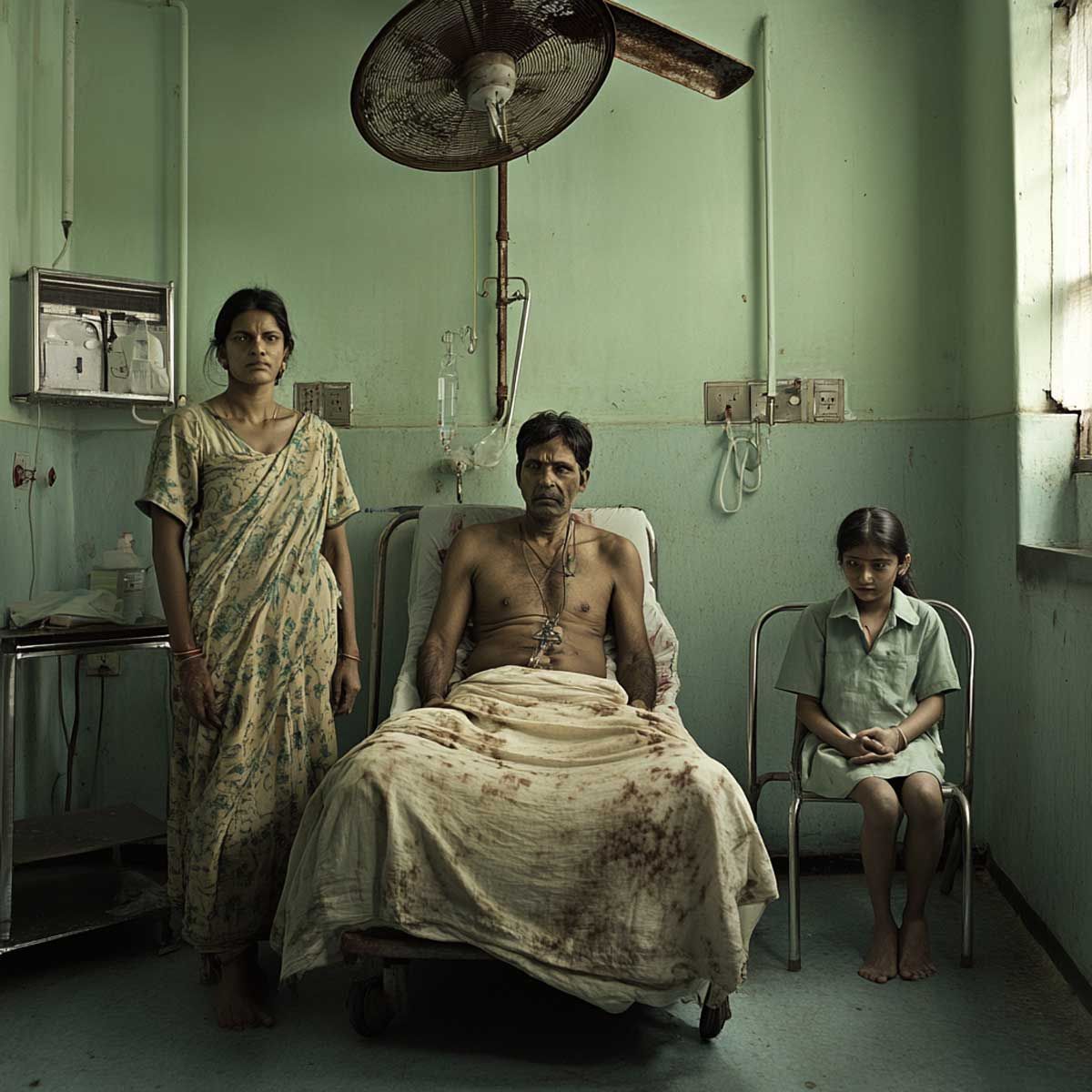More Coverage
Twitter Coverage
Satyaagrah
Written on
Satyaagrah
Written on
Satyaagrah
Written on
Satyaagrah
Written on
Satyaagrah
Written on
JOIN SATYAAGRAH SOCIAL MEDIA
"Sometimes one pays most for the things one gets for nothing": Centre gets the “Supreme” nod to end the ‘Revadi culture’, asked to take a stand on the need to control the rigorous declaration of freebies by politicians during their election campaigns

The culture of freebies is gradually becoming a hindrance to India’s development. Some ‘good for nothing’ politicians are the ones responsible for it. Nevertheless, the Supreme Court has now given a green signal to the Centre, to address the increasing ‘Revadi culture’.
Supreme Court’s direction to the central government
In a recent development, the Supreme Court asked the central government to take a stand on the need to control the rigorous declaration of freebies by politicians during their election campaigns.
A bench of Chief Justice of India NV Ramana, Justices Krishna Murari, and Hima Kohli, termed this as a ‘serious’ issue, which needs to be addressed immediately. In addition, the Centre was asked by the court to consider whether the suggestions of the Finance Commission can be sought for a solution.
In the wake of CJI asking Senior Advocate Kapil Sibal about his view on the issue, Mr. Sibal said, “It’s a serious issue but difficult to control politically. The Finance Commission when it does allocation to various states can take into account the debt of the state and the quantum of freebies.” Moreover, the Finance Commission is the “appropriate authority” to deal with this kind of issue. In addition, he said, “Maybe we can invite the Commission to look into this aspect. The Centre cannot be expected to issue directions.”
It is looming under the circle of freebies for past some time now. States changes, political representations change, but the deplorable political tactic of freebies doesn’t change. We, at TFI, have often uncovered the political strategies that public servants often masquerade with.
|
PM Modi on “Revadi culture”
Addressing the same issue, PM Modi had earlier conveyed about the “dangerous Revadi (freebie) culture”, which is gradually deepening its roots in Indian electoral politics. Those who propagate this culture will never be able to build expressways, bridges, and roads for the common masses. He opined, “People of this mindset feel they can buy off voters with free Revadi.”
On the other hand, PM Modi distinguished BJP from the opposition, by concerning their unethical means of filling their vote banks. It is pertinent to note here that there various state governments promulgatefreebie culture. It is done apparently to add to their corrupt political mindset. However, there is an intrinsic need to curb this menace.
State government’s immoral attack on public
As reported by TFI in 2020, it was Delhi CM Arvind Kejriwal who doled out the freebie lolly-pops to the public of Delhi, stating that the government was in surplus. Earlier, before the Delhi elections, Kejriwal had said, “Freebies, in limited doses, are good for the economy. It makes more money available to the poor, hence boosts demand.” However, looking at the other side of the fence uncovers the dilapidated reality of the Delhi government with the sudden outbreak of the COVID-19 pandemic.
Further, Kejriwal tried to imitate the same tactic in Punjab as well. The “Revadi culture” is the most ‘dearest’ phenomenon for AAP to win the elections. The Kejriwal government is mirroring socialist politicians like Lalu Yadav and Mulayam Singh Yadav. Politicians like them caused the states to survive in the doldrums.
The socialists appreciate, that Lalu Yadav, ruined the state by not increasing the passenger fare on railways. This further caused damage to the railway infrastructure with unhygienic stations, unavailability of tickets, extreme rush due to unavailability of trains, and delays due to single-line infrastructure.
There is an intrinsic need to eradicate the Revadi culture before it spews venom across the country. This culture can be witnessed as an obligation in India’s aim to slash all the “supposed” superpowers of the world. And this envisaged the Supreme Court to ask the central government to carry out an immediate sway of stringent actions to curb the menace.
|
There is no such thing as a freebie in economics because ultimately somebody has to bear the cost of the supposedly free giveaways
While the Arvind Kejriwal-led AAP has popularised freebies, making it a core element of their election promises across states as part of its “Delhi Model”, parties have been using freebies to lure in voter groups for years. In the hypercompetitive political landscape of India, the last few elections have been a testament to the fact that parties are continuing to use freebies as a bargaining chip with voters. However, the impact of the provision of freebies and their overall benefit has been long up for debate, with many industry experts stating that in the long run, the cost of providing such freebies increases due to the hidden externalities associated with their provision. Speaking at an event last week, N.K. Singh, the Chairperson of the Fifteenth Finance Commission flagged the rising culture of “competitive freebie politics” in India as an issue to contend with. He added that freebies affect the macroeconomic stability of governments and distort the expenditure priorities of governments. Let’s dive into the impact the provision of freebies has had on the fiscal health of some states and evaluate the costs, both actual and hidden, of providing them.
|
The AAP came back to power in 2020 with a generous welfare and subsidy policy with benefits ranging from free bus rides for women, free electricity up to 200 units, free water up to 20,000 liters a month, fee-waivers, and free tutoring for students from lower-income families, and free primary healthcare, amongst a host of other provisions. The party also made similar promises in 2016 and despite concerns about the viability of these schemes, the 2013-18 CAG (Comptroller and Auditor General) report concluded the Delhi State Government did not have any debt sustainability issues despite running such schemes. Although it should be mentioned that when the AAP came to power, it had a revenue surplus of around 4.2 percent, and while this has declined gradually, it has stayed steady at around 0.6 percent to 0.9 percent. Overall, there has been a decline in both the capital and development expenditure undertaken by the state, which has automatically increased the cash funds at the disposal of the government. The Union Territory of Delhi has the highest funds available in the country for development spending and could have spent Rs 20,142 crores in the financial year 2019-20 while remaining within the fiscal deficit limits according to the state finances report by the Reserve Bank of India (RBI). Even the 2019 CAG Report showcases that the Delhi government has consistently managed to have a revenue surplus, prompting the AAP to use this as evidence that its policies are fiscally prudent and do not impact the financial health of the state. However, critics of the policy state that such policies are only fiscally prudent in the short term and have a much larger impact in the long term, making them unsustainable.
 |
The state’s revenue surplus has been falling every year, along with a fall in its tax revenues (OTRs). While the state continues to operate with a surplus budget, experts point out this is largely due to the huge surpluses created by previous governments in the state. In addition to this, it has been pointed out that while expenditure on both education and healthcare (considered the two most important sectors in the “Delhi Model” of development of the AAP) has increased, overall investment in new infrastructure has reduced. Financial experts suggest this could indicate these popular welfare policies have come at the cost of asset creation and infrastructure development, which directly impacts the long-run financial health of the state as well as its overall production capacity.
|
Punjab's fiscal health
The AAP in Punjab inherited a state government with a debt of around Rs 2.82 lakh crores from the previous INC-led state government. When the INC government came into power in 2017, it inherited a debt of around Rs 1.82 lakh crores from the 10-year rule of the Shiromani Akali Dal (SAD) led government.
In the run-up to this election, the AAP had promised free electricity for up to 300 units to the people of Punjab, and Rs 1,000 per month for every woman, aged 18 years and above in the state. These policies are likely to put substantial pressure on an already debt-ridden state economy. Given that the promise of the AAP would cover each household in the state (for the provision of free electricity), even at the most conservative estimates, it is likely to increase the subsidy bill by at least Rs 5,000 crores. Additionally, financial assistance of Rs 1,000 per month for every woman aged 18 years and above in the state, is expected to put an additional financial burden of Rs 15,600 crore on the State Exchequer, according to experts. AAP chief and Delhi Chief Minister Arvind Kejriwal also announced that the party will not levy any additional taxes in the state, which would also mean there is no avenue for the state to increase its tax revenue streams. The huge estimated costs of these welfare policies raise the question of their viability, especially for a debt-ridden state like Punjab. It should also be noted that newly elected Chief Minister Bhagwant Mann, in his first meeting with Prime Minister Narendra Modi in March, sought a financial package of around Rs 50,000 crore to improve the financial condition of the state.
 |
References:
tfipost.com
 Support Us
Support Us
Satyagraha was born from the heart of our land, with an undying aim to unveil the true essence of Bharat. It seeks to illuminate the hidden tales of our valiant freedom fighters and the rich chronicles that haven't yet sung their complete melody in the mainstream.
While platforms like NDTV and 'The Wire' effortlessly garner funds under the banner of safeguarding democracy, we at Satyagraha walk a different path. Our strength and resonance come from you. In this journey to weave a stronger Bharat, every little contribution amplifies our voice. Let's come together, contribute as you can, and champion the true spirit of our nation.
 |  |  |
| ICICI Bank of Satyaagrah | Razorpay Bank of Satyaagrah | PayPal Bank of Satyaagrah - For International Payments |
If all above doesn't work, then try the LINK below:
Please share the article on other platforms
DISCLAIMER: The author is solely responsible for the views expressed in this article. The author carries the responsibility for citing and/or licensing of images utilized within the text. The website also frequently uses non-commercial images for representational purposes only in line with the article. We are not responsible for the authenticity of such images. If some images have a copyright issue, we request the person/entity to contact us at satyaagrahindia@gmail.com and we will take the necessary actions to resolve the issue.
Related Articles
- In a twist befitting a Bollywood plot, AAP MP Raghav Chadha, fresh from his lavish wedding with starlet Parineeti Chopra, finds his sprawling Lutyens bungalow snatched away, from palace to pared-down pad, it seems not all fairy tales has storybook endings
- Massive protest against the Bhagwant Mann-led Aam Aadmi Party government in Punjab as thousands of dairy farmers from across Punjab gathered at the Verka Milk Plant in Mohali: PDFA is leading these protests
- “Everything happens for a reason. Sometimes the reason is you're stupid and make bad decisions”: Rs 200 fine, 6-month jail for bursting firecrackers - AAP’s Environment Minister, announced manufacturing, storing & selling firecrackers punishable offence
- "उसकी गलती क्या थी": In a devastating turn, 12-year-old Kintan Saraswat's aspirations to become an IAF officer were crushed under the weight of brutal bullying and grave medical neglect, propelling his shattered family into a relentless quest for justice
- "Politics - The land of embarrassment, breakfast and inauguration": Massive embarrassment faced by Kejriwal at GGSIPU East Delhi inauguration, AAP was claiming credit for this building where foundation was laid by Smriti Irani and inaugurated by LG Saxena
- Ahead of the upcoming elections in states AAP making a ton of promises to lure voters to secure a win at any cost: How ‘free electricity' and ‘free money‘ lollipop by Kejriwal puts a high cost on the public
- Charges framed against Tahir Hussain by Delhi Court for Delhi Anti-Hindu riots 2020: 5 accomplices, active participant, used own house for throwing stone, patrol bombs etc., elaborate preparations to target Hindus
- "Civilization begins with order, grows with liberty and dies with chaos": Morbi bridge tragedy: FIR against the contractor who reopened bridge without fitness certificate, 135 feared dead, witnesses said that few youngsters were shaking bridge dangerously
- "Decisions dictate destiny": In the grand game of Indian politics, the Delhi Services Bill emerges as a pivotal chess move, with Kejriwal's theatrical outcry echoing loudly, Parliament's unwavering stance standing firm as the bill passed with 131 Ayes
- "Liquor Scam": CBI dives deep into Delhi's excise policy scandal involving ED's Asst Director Pawan Khatri, liquor magnate Aman Dhall and others, a tale of bribes, covert meetings & policy shakeup, revealing the dark underbelly of Delhi's power corridors
- "I think unconscious bias is one of the hardest things to get at": AAP MLA Amanatullah Khan arrested by Anti-Corruption Bureau in connection with Delhi Waqf Board corruption case, had illegally recruited 32 persons violating all norms and Govt guidelines
- Delhi Govt completes liquor license allotment in all 32 zones under new excise policy; earns ₹8,900 crore
- NCPCR sought an explanation over 824 out of 1,027 Govt schools not having principal: AAP leaders, including CM Arvind Kejriwal, had targeted Gujarat schools in view of upcoming state assembly elections
- Call raised for a Patiala Bandh by Hindu Groups after armed Khalistani mob attacked a Kali temple and ran amok in the city brandishing swords: FIR registered against Khalistanis
- Some miscreants burnt the religious book Hanuman Chalisa and threw the remains in garbage in Bathinda in Punjab: Hindu organizations staged protests against sacrilege, blames Aam Aadmi Party for inaction




























